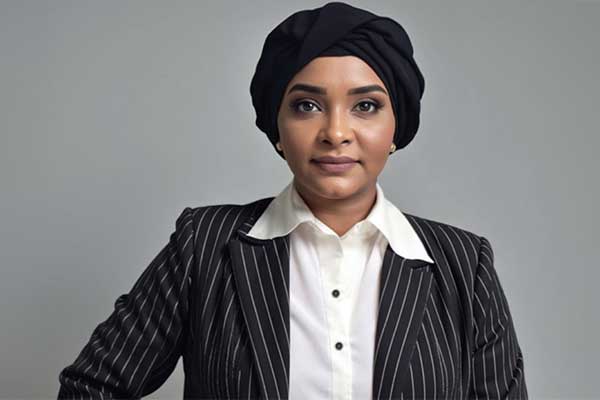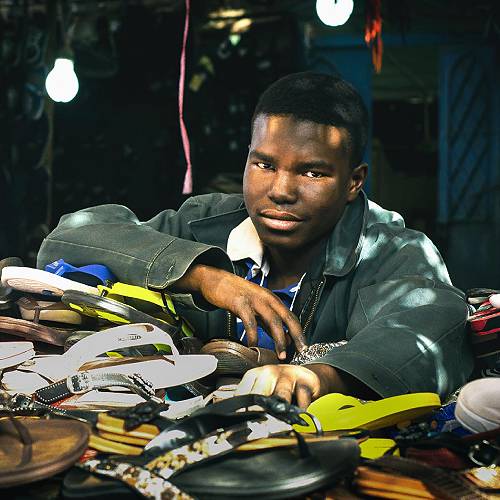
Interview
Rabab Faisal
Sudan
Rabab Faisal is a Sudanese photographer and storyteller who began in 2011 capturing everyday beauty. Photography became her voice to explore identity, dignity, and resilience, from street portraits in Sudan to international campaigns.
1 Congratulations on winning in the MUSE Photography Awards! Can you share a little about yourself, what inspired you to pursue photography, and how has your journey evolved since your first shot?
Thank you so much. I’m Rabab Faisal, a Sudanese photographer and visual storyteller. My journey began in 2011, with a simple desire to document the everyday beauty around me. Over time, photography became more than a tool—it became my voice. It allowed me to speak about identity, dignity, and resilience in a way words could not. From intimate street portraits in Sudan to internationally recognized visual campaigns, the evolution has been not just technical, but deeply personal.
2 Can you share the story or inspiration behind your award-winning piece? How does winning this award make you feel about your journey in photography?
The winning piece is part of a larger narrative exploring the silent strength within everyday people, especially women and children in conflict affected areas. It was taken in Sudan, in a quiet moment that revealed so much unspoken emotion. Winning this award reaffirms that our stories, no matter how distant or humble, deserve to be seen and remembered.
3 How do you decide which photo to submit for a competition?
I choose based on emotional truth. I ask myself: Does this image carry a story that will linger in someone’s heart? Technical excellence matters, but storytelling comes first. I submit what feels honest, raw, and timeless.
4 What first made you pick up a camera?
Curiosity. I was fascinated by how light shapes mood, and how a single frame could carry layers of meaning. My earliest images were about observation; later, they became about intention and advocacy.
5 What’s your favorite type of photography, and why do you love it?
Portraiture is not just about capturing a face; it’s about capturing essence. A good portrait speaks even in silence, honoring presence, emotion, and individuality.
6 What’s your go-to camera setup, and why does it work best for your projects? What’s your favorite feature?
I use a Canon Mark III paired with a 50mm f/1.2 lens. This setup gives me sharpness, creamy depth, and adaptability in natural light. My favorite feature is its low-light performance; it helps me capture authentic moments without interrupting them.
7 If someone looked at your work, what’s the one thing you’d want them to feel?
Connection. I want viewers to feel seen or reminded of someone they love. I want them to pause and truly feel.
8 What was the most challenging part of capturing your winning shot?
The emotion. I had to hold the camera steady while holding back my own feelings. Respecting the subject’s vulnerability and honoring the moment was the hardest part.
9 Is there a specific place or subject that inspires you the most?
Sudan: its people, textures, light, and stories. I’m endlessly inspired by its contrasts — gentleness and strength, chaos and grace.
10 Who or what has been your biggest influence in photography?
The Sudanese people—their resilience, depth, and unfiltered beauty—inspire me, as do photographers like Sebastiao Salgado, who remind me that storytelling and ethics can go hand in hand.
11 What message would you share to inspire photographers to participate in photography awards, and what advice would you give to help them excel in the competition?
Don’t wait to feel “ready.” Submit your truth. Awards are not just recognition—they are stages where stories travel far. Let your work carry your values, not just your vision.
12 What’s one piece of advice for someone just starting in photography?
Start with what you know. Your neighborhood, your family, your story. Your authenticity is your strongest lens.
13 What role do editing and post-processing play in your creative workflow?
Minimal but intentional. I use editing to enhance the emotion, not to alter the reality. It’s like seasoning a dish: enough to bring out the flavor, not change the essence.
14 How do you see technology, like AI, influencing the future of photography and your own approach?
AI is a powerful but neutral tool. It can democratize creativity if used ethically. For me, it offers new ways to archive, enhance, and share.
15 If you could photograph anything or anyone in the world, what would it be?
I would photograph elderly women across African villages—their wrinkles, their hands, their silence. They hold wisdom that needs no caption.



